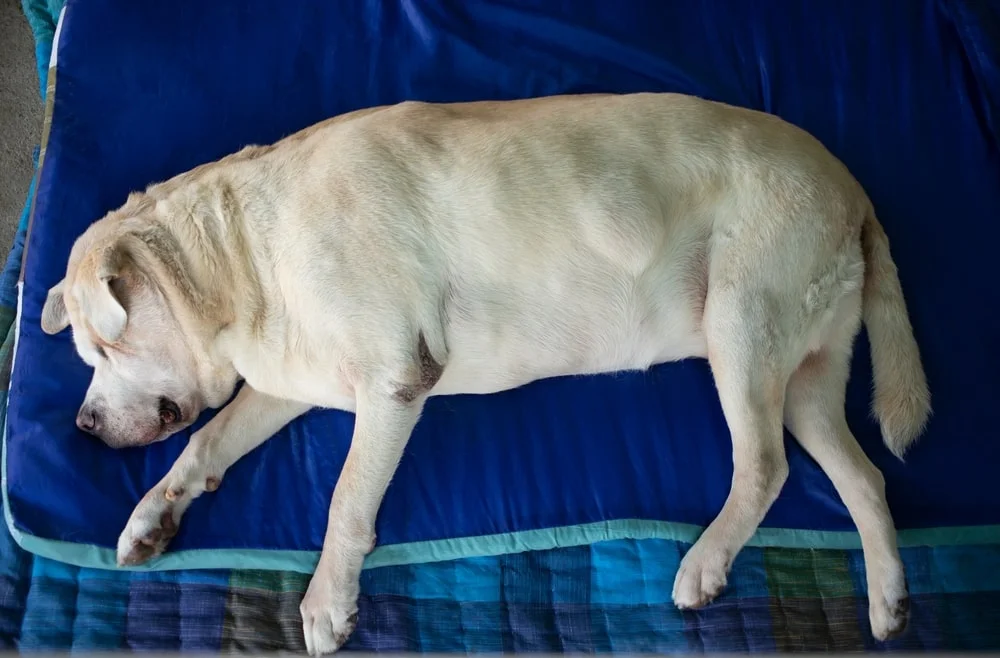PET HEALTH
Vet-Reviewed: Signs of a Dog Lipoma & Removal Cost
Lipomas are typically benign fatty tumors, but the cost of removing them can be high. A dog fatty tumor removal cost can range between $200 and $600.1 However, it can be even more expensive if the lipoma is in a difficult-to-reach spot. Keep reading to learn more about lipomas in dogs and how insurance could help cover your dog’s vet bills.
What Is a Dog Lipoma?
Lipomas are common fatty masses or tumors that form under the skin.2 The word “tumor” may sound scary, but the majority of lipomas are benign. Even the malignant (cancerous) form of a lipoma, called a liposarcoma, tends to be less concerning than other types of tumors. This is because they usually don’t metastasize, or spread to other areas of the body, making them relatively easy to find and remove.2
While lipomas are more commonly associated with dogs, they can also occur in cats. The overlying skin is typically not affected; however, with time, lipomas may grow larger and decrease your dog’s ability to move. It’s also possible for dog lipomas to form between muscle layers. This could cause more mobility issues and make it difficult to remove the lipoma.2
Although most lipomas are non-cancerous, they should still be checked by your veterinarian. Read our guide on identifying lumps and bumps on dogs to learn more about how to recognize a lipoma.
Dog lipoma causes
The development of lipomas, or any other tumor, is often complex. A number of genetic factors could be at play, along with environmental or hereditary influences. What’s known is that dogs who develop one lipoma are more likely to develop additional lipomas, especially as they age.2
What dogs are most prone to developing lipomas?
Lipomas can form on any dog, but there are factors that can increase their risk or likelihood. Senior dogs and overweight dogs can be more prone to developing at least one lipoma.2 In addition, the following breeds may also be more likely to develop lipomas:3
- Beagle
- Cocker spaniel
- Dachshund
- Doberman pinscher
- Labrador retriever
- Miniature schnauzer
- Weimaraner:
If your pup is at increased risk of developing a lipoma, a policy for your doxie, beagle, or other breed through MetLife Pet Insurance can help your mind at ease.
Dog Lipoma Symptoms and Diagnosis
The easiest way to recognize a potential lipoma is to look for lumps beneath your dog’s skin. Typically, lipomas don’t make dogs uncomfortable, unless their normal movement is disrupted. You might notice your dog having a harder time moving around, using the stairs, or getting up due to a lipoma’s placement. Dogs with one lipoma may also develop several lipomas over time.
If you find a lump, bring your pup to the vet so they can make a more conclusive diagnosis. This usually involves using fine needle aspiration to take a small sample of cells from the growth and inspecting it under a microscope. In some cases, your vet may also perform a biopsy.2
Diagnosing complex dog lipomas can cost upwards of $200, including fees for an exam, testing, and radioimaging if necessary.1 A dog insurance policy could help cover some of these costs.
Dog Lipoma Treatment
Not all benign lipomas need to be removed. Your dog may live the rest of their life unbothered by the growth, and simply monitoring for changes in size may suffice. However, some may need to be removed due to mobility issues, while others could be removed for cosmetic reasons.
Most dog lipomas can be easily removed with a simple surgery, and they typically have a low chance of returning if they’re benign.2 The smaller the lipoma, the easier the procedure — so it’s important to catch them early. Larger lipomas, those located deeper in your dog’s body, or in places harder to operate on, may require more extensive surgery. This could raise the cost of treatment into the thousands.
For liposarcomas and lipomas found between muscle layers that return after removal, it’s recommended they be removed again. Cancerous liposarcomas may also require radiation therapy to be eradicated completely2 — all of which can increase vet bills even more.
Pet Insurance May Help With Dog Lipoma Removal Costs
Though the majority of dog lipomas are benign, they shouldn’t be ignored. A dog insurance policy could reimburse you for the cost of diagnosis and removal. However, it should be noted that pet insurance policies may only cover dog lipoma removal if they put your pet’s health at risk. Learn more about how pet insurance works to see if it’s right for you. Or get a free quote today to see how much you could save on your dog’s health care.
Lumps Can Be Scary. Vet Bills Don’t Have To Be.
Dr. Hunter Finn is an integrative veterinary expert first, and social media star second. America’s favorite veterinarian owns Pet Method in McKinney, Texas, where he cares for pets while prioritizing their emotional well-being. When he’s not at his clinic, he’s starring in viral videos on TikTok (2 million followers) and Instagram (500K followers) — where he’s been known to snuggle puppies and conquer the latest dance trends.


